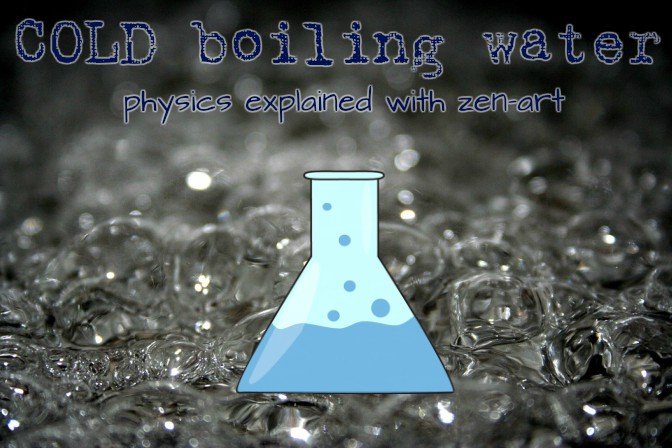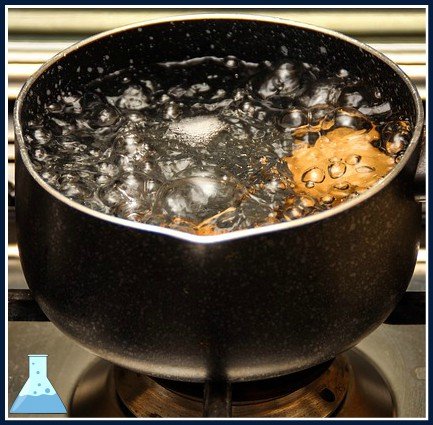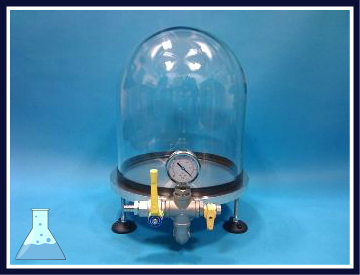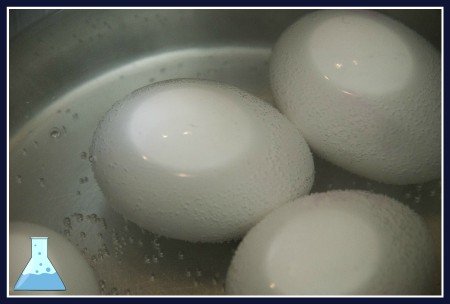
We have all seen a water boil a million times in our lives and it is acceptable to us that in order to cook something, that something needs to be put in a water that is boiling.

Water boiling has nothing to do with cooking, water being of a certain degree of heat, on the other hand, has everything to do with cooking. "But water is hot when it boils" you say... Yes, yes it is, but would you believe me if I say that water can be cold and be boiling at the same time? What fresh Witchery is this? Nope, not witchery, just plain science that I will happily explain to you in this post. Are you ready?

At any given temperature, all liquids exert a certain vapor pressure. Those bubbles that you see when the water is boiling is the change of phase from liquid to vapor. You could imagine that water molecules "want" to do that all the time but the surrounding atmospheric pressure is not allowing them and "pushing" them down.

At standard atmospheric pressure (0.101325 MPa), water boils at approximately 100 degrees Celsius. With increasing temperature, the molecules move faster and faster because they are able to overcome the attractive intermolecular forces that are usually holding them together more tightly. This is why the vapor pressure increases with temperature. We are heating up water and rising the vapor pressure so when it reaches the atmospheric pressure, the water boils.
The boiling point is the temperature at which the vapor pressure of a liquid equals the external pressure surrounding the liquid.

In the previous paragraph, we have learned, or reminded ourselves how water boils and why. Two pressures need to be the same for that to happen. The first way to accomplish this is by heating up the water and in that way increasing her vapor pressure until it reaches the external one. This we covered so far, but there is a second path to boiling, the one where we leave the water alone and play with the surroundings instead.

We can make the surrounding pressure lower. This is usually done by the use of vacuum pumps. Put a glass of water inside of a glass bell cylinder that is connected to a vacuum pump, and turn the pump on. It will suck the air out of the glass container and lower the pressure inside of it. The water in the glass will boil even though it is cold because the surrounding pressure will be the same as the vapor pressure.
If you want to make cold liquids boil, put them in an area of low pressure!

At altitudes above 2,000 feet (610 m) the atmospheric pressure becomes so low that normal cooking is not possible. Water boils sooner so you have to compensate by either boiling food longer or using a pressure cooker.

Water boils at 100°C when at sea level but that boiling point is lowered by 0.5°C with each 150 meters (500 ft) increase in elevation. Vegetables and starches will take longer to cook but rice and pasta will never be done unless you use a pressure cooker. Mount Everest is at 8,848 meters (29,029 ft) and water there boils at approximately 90°C.
"Having crossed the Peuquenes (Piuquenes), we descended into a mountainous country, intermediate between the two main ranges, and then took up our quarters for the night. We were now in the republic of Mendoza. The elevation was probably not under 11,000 feet [...]Hence the potatoes, after remaining for some hours in the boiling water, were nearly as hard as ever. The pot was left on the fire all night, and next morning it was boiled again, but yet the potatoes were not cooked."Charles Darwin, The Voyage of the Beagle
For more information on water boiling visit these sources and/or find some more. We live in the age of information, use it 😉
SOURCES:
www.thoughtco.com
physlink.com
www.iapws.org
en.wikipedia.org

Unsourced images are created from images that are under CC0 License and are free for personal and commercial use. You can find them at pixabay.com. To check out the people who made these particular photos, check their profiles here: Monsterkoi, Three-shots & maraisea. The vacuum pump image is from www.appliedvacuum.co.uk.
For my philosophy of happiness posts, please find them on my steemit page and for the "Into the quantum world..." novel that I am writing exclusively for steemit click here:
